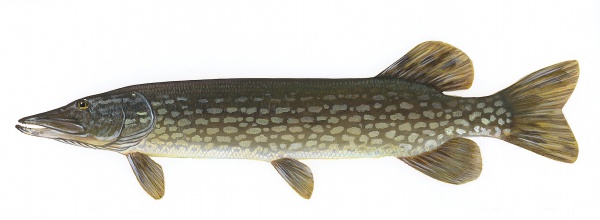Facts About Northern pike
The northern pike, a carnivorous fish from the genus Esox, thrives in both brackish and freshwater habitats across the Northern Hemisphere. Often simply referred to as a pike in some regions, this fish can grow impressively large, with some individuals reaching up to 150 cm in length and weighing as much as 28.4 kg. You can identify a northern pike by its olive-green color and light, bar-like spots along its sides. Its diet is quite varied, including fish, frogs, insects, and even small mammals and birds.
Known for their aggressive feeding habits, northern pike do not shy away from cannibalism when food is scarce. They are ambush predators, lying in wait before striking their prey with incredible speed. Their hunting strategy relies on sudden bursts of energy to capture unsuspecting victims. Come spring, when water temperatures reach around 9°C, pike enter their breeding season, exhibiting strong homing instincts and laying numerous eggs.
As apex predators, pike play a crucial role in their ecosystems but can threaten native fish populations if introduced to new areas. Anglers prize pike for their fighting spirit, employing various techniques such as using dead baits, lures, and even fly fishing to catch them. Catch and release is becoming more popular, although it is important to handle these fish carefully due to their sharp teeth.
In areas with high pike populations, regulations help manage their numbers and protect the ecosystem. While their flesh is considered bony, pike have a place in culinary history. They are also celebrated as sporting fish, with groups like the Pike Anglers Club advocating for their conservation. Northern pike are found throughout the Northern Hemisphere, inhabiting fresh waters in Europe, North America, and even brackish waters like the Baltic Sea.

 Norway
Norway